Elizabeth Taylor and Richard Burton’s romance wasn’t just a love story—it was a cinematic epic in itself. Passionate, scandalous, extravagant, and endlessly fascinating, their relationship captured the world’s attention for over a decade and became a defining tale in the history of Hollywood. It began under the scorching lights of the Cleopatra film set in the early 1960s, where the chemistry between the two stars ignited like dry brush on fire. Elizabeth, already a screen legend by then, and Richard, the Welsh actor with a voice that could melt glass, had no idea they were stepping into a whirlwind that would both enchant and devastate them.

The irony was stark—they weren’t single. Elizabeth was married to singer Eddie Fisher, and Richard was with his wife Sybil. Yet, the moment they looked into each other’s eyes on set, it was as if fate had intervened. Their connection was instant, undeniable, and completely overwhelming. The affair that followed made international headlines, not just because of the people involved but because of the sheer intensity with which they loved—and hurt—each other. The Vatican even went so far as to condemn their relationship, calling it “erotic vagrancy,” a term that only added to the mythos surrounding them.
By 1964, the scandals had reached a fever pitch. The couple, each now divorced from their previous spouses, married in a lavish ceremony in Montreal. That moment marked the beginning of what would become one of Hollywood’s most talked-about marriages. Their union wasn’t just about shared affection—it was about fireworks, fights, and fortune. They bought yachts, diamonds, and homes on different continents. Their arguments were loud and legendary, often spilling into public view. But so was their affection, with passionate reconciliations, grand gestures, and frequent declarations of love. They starred together in eleven films, including Who’s Afraid of Virginia Woolf?, a raw and powerful portrayal of a dysfunctional marriage that earned Elizabeth an Academy Award.
Their lifestyle was just as dramatic as their performances. Richard lavished Elizabeth with gifts—none more famous than the 33.19-carat Krupp Diamond and the 69.42-carat Taylor-Burton Diamond. These jewels weren’t just symbols of wealth; they were tokens of a volatile romance that burned brightly and often too hot to handle. They spent millions on art, traveled the globe, and hosted extravagant parties that made them the darlings of both the film industry and tabloid press. Yet, behind the glitz and glamour, their relationship bore the weight of personal demons. Richard struggled with alcoholism, and Elizabeth battled health issues and emotional instability. These challenges often pulled them apart just as powerfully as their passion pulled them together.
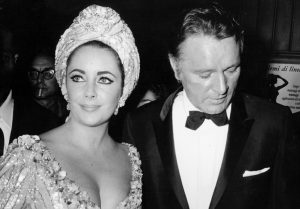
In 1974, after a decade of highs and lows, the couple filed for divorce. The end of their first marriage marked the close of a wild chapter, but not the book. Just a year later, in 1975, they shocked the world by remarrying. It was a gesture that seemed hopeful to some and inevitable to others—after all, how could two people with such intense history ever truly let each other go? But the second time around was short-lived. Within months, the cracks began to show again, and they divorced for the second and final time in 1976. Yet, even then, their bond was never entirely broken. The love didn’t vanish. It simply changed form.
Over the years, the world has tried to make sense of their relationship. Were they soulmates doomed by their own fame? Or were they two kindred spirits caught in the chaos of their own hearts? Elizabeth would later say that Richard was the love of her life and that no one ever truly understood her the way he did. Even after their second divorce, they remained in touch, writing letters and speaking from time to time. When Richard passed away in 1984, Elizabeth was devastated. She didn’t attend his funeral, not out of disrespect but because she said, “I couldn’t bear to see him buried.”
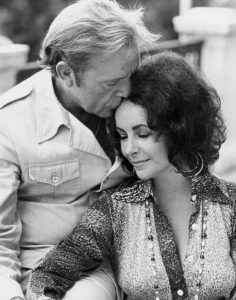
What made their love story endure wasn’t just the public drama—it was the private moments, the tender exchanges that only those closest to them ever saw. In recent years, rare and previously unseen photographs have surfaced, offering a glimpse into those moments. These images show them in their most unguarded states—cuddled up on a yacht, laughing in bathrobes, sharing a quiet moment between takes. There’s a humanity in those photos that strips away the celebrity and leaves just two people, madly in love, struggling to navigate a life of fame and emotion.
Their story reminds us that love, even when imperfect or fleeting, leaves a permanent mark. Theirs was not a love of fairy tales. It was messy, passionate, destructive at times—but always real. And perhaps that’s why people are still fascinated by Elizabeth and Richard. In a world full of carefully curated public personas, they lived loudly and loved without apology. They fought hard, but they also loved harder. And for a time, they believed they could weather anything together.
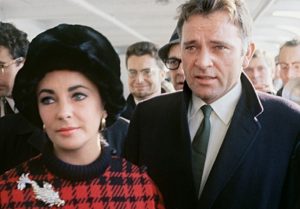
One of the most memorable aspects of their love was how it defied logic. They were constantly at odds, yet always drawn back to each other. Richard once said, “I might run from her for a thousand years and she is still my baby child. Our love is so furious that we burn each other out.” Elizabeth echoed similar sentiments, admitting in interviews that theirs was a love few people could understand. “We were like magnets, always being pulled back to each other,” she said. That magnetism extended far beyond the set. Even during their separations, when they dated or married other people, they remained a reference point in each other’s lives.
Their shared artistic pursuits also helped shape their connection. Acting together in intense roles allowed them to channel their real emotions through fictional characters. In The Taming of the Shrew, they bickered and bantered with the kind of authentic energy that can only come from lived experience. In The Sandpiper, their chemistry was so palpable that even critics who doubted the film’s storyline couldn’t deny the fire between them. These films served not only as entertainment but as a kind of living scrapbook—scenes from their own romance told through the lens of Hollywood.
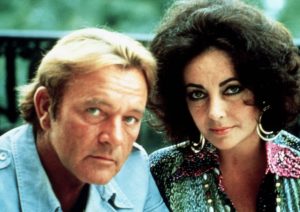
The photos included in the article highlight the many faces of their relationship. One frame might show Elizabeth in full makeup, adorned in diamonds, posing on the red carpet with the ease of a seasoned starlet. The next might catch her laughing barefoot in a kitchen, with Richard leaning in close, whispering something that clearly delighted her. These images are powerful because they remind us that even icons are just people—flawed, emotional, deeply human. They pull back the curtain on what the public never saw: the private joy, the spontaneous affection, the quiet moments of vulnerability.
In looking back at their story, it becomes clear that Elizabeth Taylor and Richard Burton weren’t just famous—they were fascinating. They embodied the contradictions that exist within many relationships: love and hate, passion and resentment, longing and fear. They gave themselves to each other fully, flaws and all, and that’s perhaps the most courageous thing any couple can do. Their relationship wasn’t perfect, but it was authentic. And in Hollywood, where so much is artificial, that authenticity is rare and cherished.
Though their love didn’t survive in the form of a lasting marriage, it endured in ways that matter. Elizabeth went on to marry others, but she never spoke of any of them the way she spoke of Richard. She kept his letters, wore the jewelry he gave her, and often spoke of their time together with a fondness that never faded. Even decades later, interviews with her would eventually circle back to Richard. He wasn’t just part of her past; he was part of her identity. And perhaps that’s the most enduring legacy of their love—that it shaped who they were, both individually and as a pair.
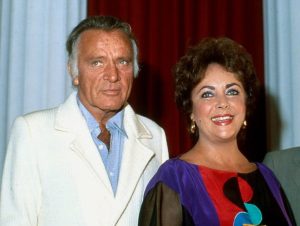
Today, their story still holds a place in popular culture. Films, books, documentaries, and retrospectives revisit their time together, trying to make sense of what made their love so magnetic. But the truth is, some things aren’t meant to be understood—they’re meant to be felt. And Elizabeth and Richard made people feel. Whether it was admiration, envy, shock, or empathy, they stirred emotions wherever they went. They lived loudly, loved deeply, and hurt visibly. And in doing so, they became more than movie stars—they became a myth, a cautionary tale, a symbol of what happens when two intense souls collide.
Their story may have ended long ago, but its echo still lingers. Not because it was perfect, but because it was human. And for anyone who has ever loved too much, hurt too deeply, or longed for a connection that defies reason, their story offers a mirror. A mirror into the complicated, beautiful, messy truth of love.





